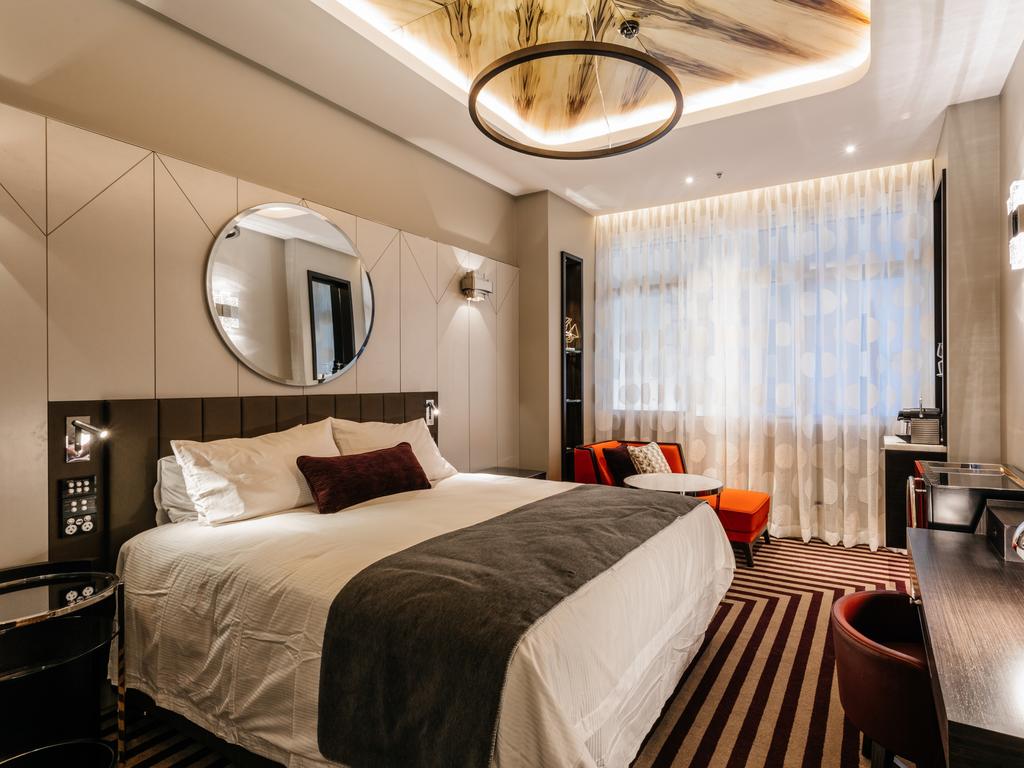Astrotourism shines bright in the travel sector
Stargazing has a universal appeal, and it’s become a booming part of the travel firmament.
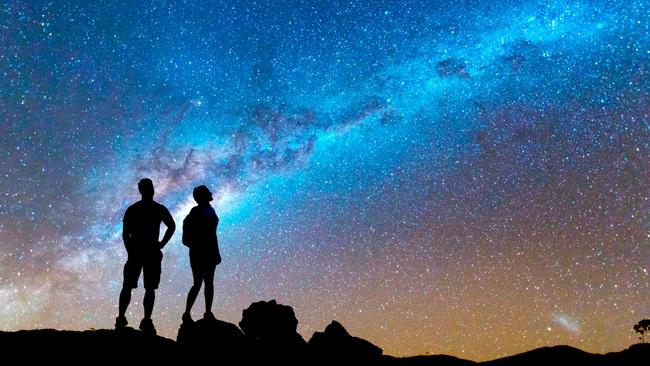
To the west a ragged sheet of cloud hangs stubbornly in the evening sky. But overhead the cloud has cleared to reveal a splay of stars and a cuticle of new moon. It’s a few hours after sunset at Nocturna, Tasmania’s inaugural dark sky party on the state’s scalloped east coast, and I’ve stopped to natter to an amateur stargazer with a white enamelled telescope the size of a small rocket. He cleans the aperture and invites me, with a courtly gesture, into The Universe.
But there is, as far as I can see, nothing there. All I get is a deep black disk. The heavens are empty. The atheists are right after all.
I report my failure to the telescope guy. He’s one of several stargazers gathered together with their gizmos outside the entrance to Spring Bay Mill, a former woodchip facility turned function and performance space with views across the channel to Maria Island.
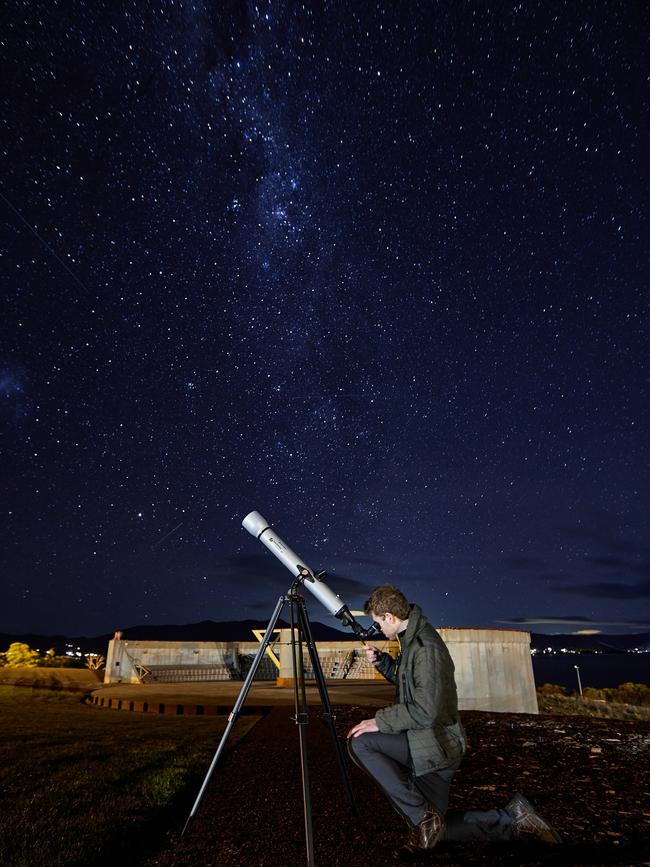
He crouches, fusses around, and extends his hand once more. This time – instant success. I’m looking not only at one of our solar system’s nine planets, but the most poetic planet of all: Saturn.
We first grow familiar with the planets through artists’ renderings and high-resolution photographs from spacecraft, but there’s something magical about seeing the real thing with one’s own, albeit greatly assisted, eyes. Some lines from Keats come to me:
Then felt I like some watcher of the skies,
When a new planet swims into his ken.
The telescope guy is energised. “Have a look at this,” he says after a few tweaks of the apparatus. Voila, I have Jupiter and its string of pearls “Galilean” moons. There is Ganymede, Io, Callisto and Europa, all of whom had their adventures – or misadventures – with Jupiter in classical mythology.
Astrotourism is a growing niche, with tourists seeking out night skies beyond the light pollution of the big cities. Alaska, Chile, New Zealand and the Nordic countries are established global astrotourism destinations, but Tasmania is making a name with its large tracts of unsullied sky above thinly populated coastal regions and national parks. In December this year, Spring Bay Mill will host a “shooting star soiree” when the Geminids meteor shower is expected to peak.

A number of West Australian coastal and outback towns – among them Bindoon, Carnamah, Cervantes, and Mingenew – are magnets for astrotourists. In NSW, Warrambungle National Park, west of Coonabarabran, was designated Australia’s first Dark Sky Park in 2016. Coonabarabran is also home to Siding Spring Observatory, with eight optical telescopes, including the country’s largest. Outback Astronomy in Broken Hill offers stargazing tours and information nights. In Victoria, stargazers head to Snake Valley in the state’s west, close to Ballarat, and the nearby Ballarat Observatory. Twice a year, in March and December, the Astronomical Society of Victoria opens its Leon Mow dark sky site, near the town of Heathcote, to the public. South Australia has its 3200sq km River Murray Dark Sky Reserve, one of only 15 such sanctuaries worldwide.
A week before Spring Bay Mill’s Nocturna event, I glimpse the Milky Way through the feathery tree canopy of an eco-camp deep in Tasmania’s southwest wilderness, and I’m reminded of another viewing of our galaxy several years ago on a bitterly cold winter night outside Uluru. The starlight was so radiant that night that my hand cast a shadow. If there’s one form of tourism in which Australia might lead the world, surely it’s astrotourism. We’re blessed, after all, with the one indispensable natural resource: space.

Nocturna’s great gift is a chance to view the planets through a high-powered telescope. But the solar system is not the only star turn at Tasmania’s big dark sky party, culmination of the 10-day Beaker Street science and art festival. There is also a Zoom lecture by astrophysicist Brian Schmidt, vice-chancellor of Australian National University and 2011 Nobel laureate. An audience of about 500 people, a mingling of astrotourists and the astro-curious, listens intently as Schmidt explains a little of Einstein’s contribution to our understanding of the universe before unpacking his own studies of distant supernovae. Schmidt knows how to pitch his story to a general audience, but it’s still mind-boggling stuff.
Afterwards I join a queue to ask a question of my own. Does the expanding universe affect material bodies such as our planet or simply the space between matter?
“If the universe’s expansion accelerated through the impact of dark energy – double the amount – then eventually there would be so much dark energy it would rip us apart,” he says, adding: “In a long, long time in the future, the galaxy will evaporate and eventually the protons you’re made of will, we think, decay. Eventually you will be independent particles drifting in space but that,” he adds in a chipper tone, “is trillions upon trillions of years away.”
I feel a pressing need for a glass of pinot at the bar and a Korean pork bun from one of the food vans, if only to bring me down to earth. Afterwards, my equilibrium restored, I hear a talk from Indigenous scholar Theresa Sainty, who explains how Tasmania’s Aboriginal people looked to the night skies and saw an emu and other creator spirits in the spaces between the stars: the absences, the dark spaces.
The drive back to Hobart is short – little more than an hour. But after a journey to Saturn, Jupiter and the world of Indigenous astronomy, it feels like I’ve been gone a long time.
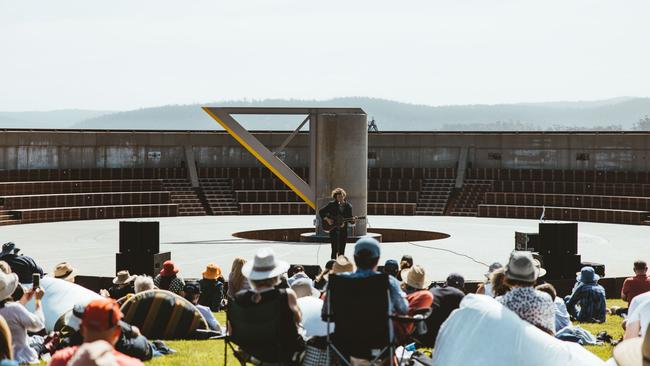
In the know
Nocturna will be held again at next year’s Beaker Street Festival in August. Beaker Street is running monthly Dark Sky Dinners in collaboration with Dark Sky Tasmania and chef Luke Burgess for a maximum 10 people at Avalon City Retreat, Hobart; $300 a person.
More to the story
The conversion of the wood chip mill at Triabunna, once the largest of its kind, began with a Tasmanian holiday. Wotif founder Graeme Wood was driving down the island’s east coast when he reached the deep-water port town. Logging trucks choked the narrow coastal road, their destination a vast pyramid of woodchips piled up at the dock. The first time Wood set eyes on it, he says he felt ill.
Owned by the now defunct forestry company Gunns, the mill had run into headwinds in 2011. The great blades of the chipper, the clanking cranes and conveyor belts, and the rusty gantry – its footing now an amphitheatre – ground to a halt. With the mill idle, Wood and Kathmandu founder Jan Cameron made their move.
The two environmentalists sealed a takeover deal for $10m, confounding the best-laid plans of local log-hauling company Aprin, which believed its request for a multimillion-dollar loan to buy the mill had been approved by the Tasmanian government.
Wood refers to himself as the site’s “custodian”. The name Spring Bay Mill retains a memory of its former purpose – it chewed up an estimated one million tonnes of native forest hardwoods a year for close to 40 years – while alluding to the many springs that thread through this ancient landscape.
The green-shoot reinvention phase is well underway. This year, Hobart and Melbourne practice Gilby + Brewin Architecture won in three categories at the Tasmanian architecture awards for its work at Spring Bay Mill. As Ross Brewin explains, the decision was made to preserve as much of the old industrial structure as possible.
“It should look from the outside as if it was just abandoned yesterday.”
The site offers glamping and “chic shack” accommodation, and is available for performances and business events.
Luke Slattery was a guest of Beaker Street Festival.
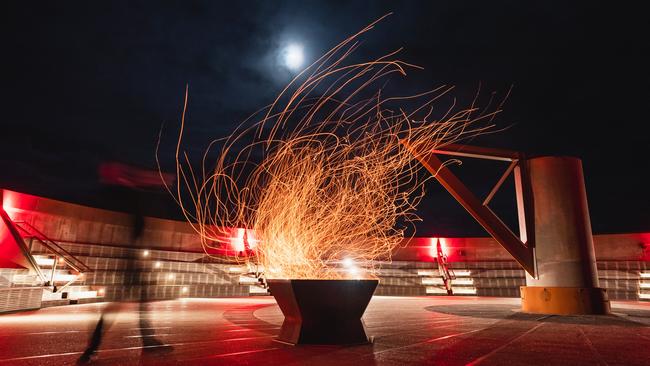
Four other ways to admire the heavens
By PENNY HUNTER

UTAH, US
With more than 20 certified Dark Sky Parks and Communities within its borders, this US state has the highest concentration of stargazing hotspots in the world. Utah is at the centre of the Great Western Starry Way, which stretches from New Mexico to Montana. Arches, Bryce Canyon and Zion national parks plus Dinosaur and Natural Bridges national monuments are among the best viewing places. The combination of clear, arid conditions, bright night skies and geological wonders such as mesas and hoodoos makes for sensational photo opportunities. Many of the national parks run ranger-led astronomy tours, or you can go with a private operator. Exclusive luxury resort Amangiri, in the south, has an astronomer on hand to guide you through the universe from your private “sky terrace”.

ASTROYSTAYS, INDIAN HIMALAYAS
Astrotourism is being used to boost incomes and tackle gender equity in the remote Indian Himalayas, where night-time light pollution is minimal and scenery by day is spectacular. Under an initiative by Global Himalayan Expedition, 10-inch telescopes have been installed in the Ladakh villages of Leh and Maan, which is perched beside beautiful Pangong Lake (pictured). Thirty women have been trained in their operation, astronomy basics and hospitality to provide visitors not only with stargazing opportunities but a deeply immersive cultural experience. Accommodation is in basic homestays, sampling local cuisine using ingredients farmed by the hosts. Female guides help visitors explore the heavens, sharing knowledge from a western and traditional perspective.
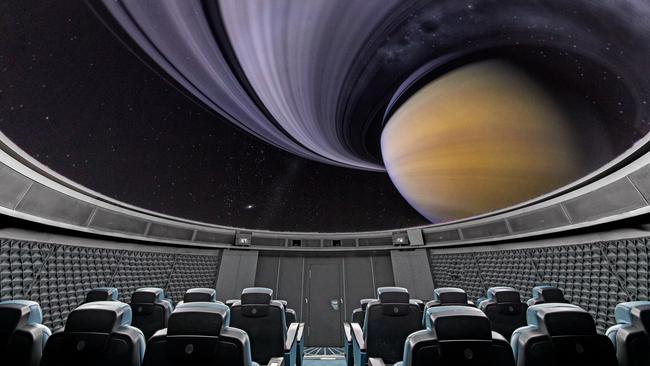
ALL AT SEA
Even cruise lines are jumping on board the astrotourism band wagon. Cunard’s Queen Mary 2 was the first ship to boast a planetarium. Called Illuminations, it does triple duty as a 3D cinema and classical music venue, with a domed overhead screen on which pre-recorded astronomy shows are projected. Launched in 2018 and 2019 respectively, Viking Orion and Jupiter sail with a resident astronomer, who conducts lectures on the cosmos in the hi-tech, 26-guest Explorers’ Dome. The vessels have a portable telescope that can be paired with the Dome for live viewings of the night sky. In addition, some cruise lines time their itineraries to position passengers for prime viewing of events such as lunar and solar eclipses and meteor showers.

ALMA OBSERVATORY, CHILE
The Atacama Desert in northern Chile is renowned for its cloudless skies, elevation and low humidity, making it the perfect location for the world’s largest and most expensive ground-based telescope. Made possible by a $US1.4bn international collaboration, ALMA launched in 2011 and now comprises 66 radio telescopes capable of incredible precision. The array has taken unprecedented photos of stars and discovered the oldest spiral galaxy ever observed, but its biggest claim to fame is the first image of a black hole, captured in 2019 in tandem with the Event Horizon Telescope. Pre-covid, the public could visit the facility for free on weekends, registering well in advance and taking an authorised bus from San Pedro de Atacama.



